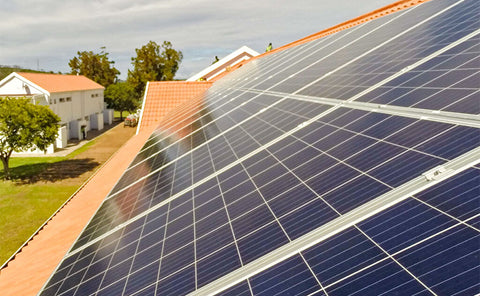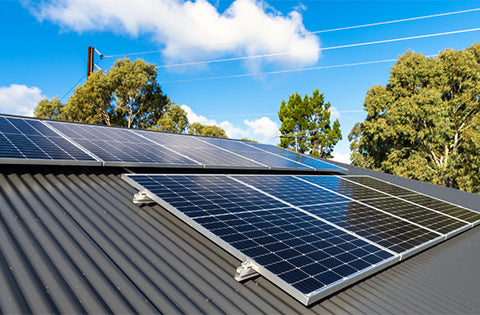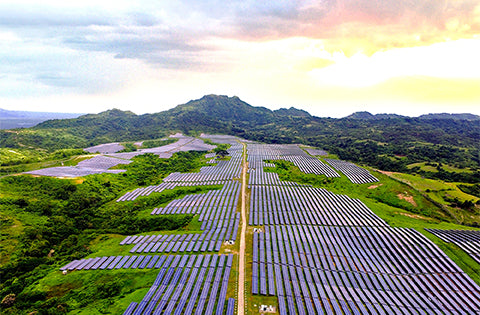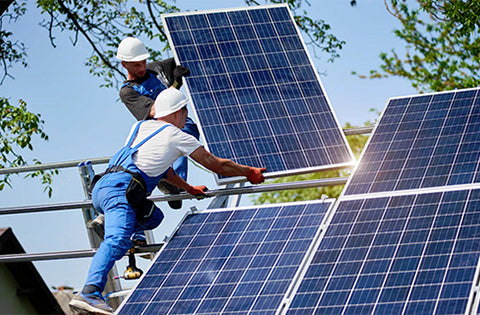When you choose to switch to solar, maybe you can so something to support your solar system installation. Before you pull the trigger with solar, you need to be aware of your total electricity usage. Then you can decide if you would like to decrease your total electricity use.
You’ll also want to assess the potential solar energy that can be produced at your home. There are several mapping services and tools available to help you determine your home’s solar energy potential. These tools will help you consider whether your home is suitable for solar, and how you can best utilize solar. The most efficient solar energy assessment is one provided in-person by a solar expert, many solar companies provide this service for free.
Some additional considerations:
- Nearby shade from trees.
- Age of your home`s roof and how long until it needs replacement.
- Neighborhood or homeowner association restrictions or approval requirements.
You’ll want to gather some information about your home and electricity use. Review your electric bill to determine annual electricity needs in kilowatt-hours and determine which months you use more electricity than others. Also, consider if you’ll be adding any significant efficiency upgrades and how that might influence your electricity needs.

Reduce energy use
There are several things you can do to reduce your family’s energy use prior to going solar. An easy place to start is by conducting a home energy audit to understand where your home is losing energy. While a professional energy audit is most efficient, you can also do one yourself.
You’ll want to make a list of obvious air leaks or drafts, checking along baseboards or the edge of the floor. Reducing drafts can potentially result in 10 to 20 percent energy savings, and your home will be much more comfortable too. Don’t forget to check windows, doors, lighting, and plumbing fixtures, switches, and electrical outlets.
After you’ve found those air leaks, seal them up tight by plugging and caulking holes for faucets, pipes, electrical outlets, and wiring. Cracks and holes in the mortar, foundation, and siding can also leak air.
You’ll also want to check the insulation levels in the ceiling and walls of your home and inspect heating and cooling equipment annually. Check and replace filters as needed for forced-air furnaces, generally, every month or two, especially during high use times. Have a professional clean and check your equipment once a year. You could also replace an older unit with a newer, more energy-efficient unit.
Use appliances and electronics more efficiently, or invest in highly efficient appliances. This includes the obvious, such as completely switching off appliances when they are not being used, only running your washing machine when you have a full load, and drying your clothes outside or on a clothes rack indoors.

Energy for lighting accounts for about 10 percent of your electric bill. The Department of Energy estimated that one LED bulb could last 25,000 hours, which is 25 times longer than an incandescent bulb, which lasts only about 1,000 hours. So switching your lighting to a more efficient type is worth the investment. You could also install dimmer switches or motion-activated lights for further energy savings.
After solar is installed
Once you’ve installed a solar system, there are still ways you can further reduce your energy consumption. Get access to your data and view your solar panel performance to see how much energy you’re getting from the system. Clean solar panels can produce slightly better than dirty ones, so cleaning your solar panels annually can be a good idea. Using a common garden hose can easily take care of your panels in most circumstances.
You can make other adjustments inside your home to help save on energy use. For example, if you have a 10-year-old TV, you might want to consider a newer model that uses much less electricity. Changing your shower head to a lower flow model will also help you save water, which you don’t have to heat using electricity. Once you’ve laid all the groundwork for solar, your home will be ready to produce inexpensive green energy for years to come.
To learn more about solar power, please follow SOLARPARTS official website:
Twitter: Solarparts Instagram: Solarparts
Tumblr: Solarparts Pinterest: Solarparts
Facebook: Shenzhen Solarparts Inc
Email address: Philip@isolarparts.com
Homepage: www.isolarparts.com



